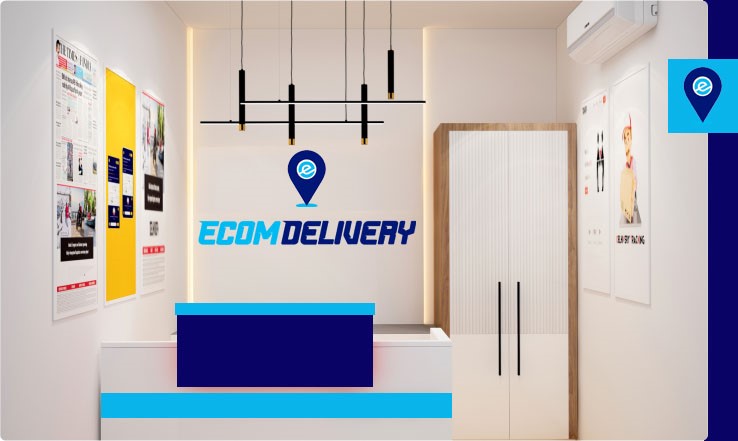E-commerce, a transformative force in modern retail, has reshaped how we shop, connect, and live, but its rapid rise has cast a mirage over the charm of local markets, leaving physical shops struggling to survive. This comprehensive blog explores the essence of e-commerce, its services, and the motto of faster and better customer service. We trace its origins globally and in India, analyze its growth, economic contributions, and government support for startups, and examine its role in shaping lives while highlighting the 2024 milestone of 300+ unicorns. We also delve into the challenges startups face in competing with e-commerce giants, the environmental and social impacts of global product reach, and the decline of local shops, offering a balanced perspective on how e-commerce has both empowered and disrupted Indian society.
What Is E-Commerce and What Services Do E-Com Sites Provide?
Defining E-Commerce
E-commerce, or electronic commerce, refers to the buying and selling of goods and services over a digital platform, primarily the internet. It encompasses a wide range of transactions, from online retail (e.g., Amazon, Flipkart) to digital payments and services like ride-hailing or food delivery. In India, e-commerce is defined under FDI policy as involving the "buying and selling of goods and services over a digital network," a definition that captures its vast scope.
Services Provided by E-Commerce Sites
E-commerce platforms offer a plethora of services designed to enhance convenience:
- Online Retail: Platforms like Amazon, Flipkart, and Myntra sell everything from electronics to clothing, often with detailed product descriptions, reviews, and comparison tools.
- Quick Commerce: Services like Swiggy Instamart and Blinkit deliver groceries and essentials in 10-30 minutes, catering to urban demand for speed.
- Digital Payments: UPI dominates with a 55% share, followed by credit cards (25%) and digital wallets (7%), as per posts on X, ensuring seamless transactions.
- Logistics and Delivery: Advanced supply chains and last-mile delivery networks ensure products reach customers swiftly, often within 24-48 hours.
- Customer Support: AI-driven chatbots, 24/7 helplines, and easy return policies prioritize customer satisfaction.
- Personalization: Algorithms recommend products based on browsing history, enhancing user experience.
Motto of Faster and Better Service
The core motto of e-commerce is "customers first," achieved through:
- Faster Service: Leveraging technology (e.g., AI for inventory management, drones for delivery trials) to reduce delivery times—60% of orders now come from smaller towns with same-day delivery expectations.
- Better Service: Offering a seamless shopping experience with user-friendly interfaces, secure payments, and responsive support, ensuring 75% of online shopping occurs via smartphones, as noted in posts on X.
The Genesis of E-Commerce: Global Origins and India’s Journey
When and Where E-Commerce Began
The concept of e-commerce dates back to the 1960s with the advent of Electronic Data Interchange (EDI), but it gained prominence in 1995 when Amazon launched as an online bookstore in the U.S. eBay followed, introducing online auctions, and by the late 1990s, e-commerce became a global phenomenon, driven by internet proliferation.
E-Commerce’s Entry into India
India’s e-commerce journey began in 1999 with the launch of Baazee.com, an online auction platform later acquired by eBay in 2004. However, the sector truly took off in 2007 with Flipkart’s founding by Sachin and Binny Bansal. Initially an online bookstore, Flipkart expanded rapidly, capitalizing on India’s growing internet user base (from 5 million in 2000 to 137 million by 2010). The introduction of cash-on-delivery (COD) addressed trust issues, as 70% of early users were skeptical of online payments. By 2013, Amazon entered India, intensifying competition and innovation.
India’s E-Commerce Growth Over the Years
India’s e-commerce market has grown exponentially:
- Market Size: From $3.8 billion in 2010, it reached $84 billion in 2023, with a projected CAGR of 27% to hit $163 billion by 2026 (IBEF).
- Economic Growth: E-commerce contributes 2% to India’s GDP, driving retail to 8% of the market, expected to reach 14% by 2028 (posts on X).
- Foreign Reach: Platforms like Amazon and Flipkart enable Indian sellers to export to 200+ countries, with 15% of sales from cross-border trade (Invest India).
- FDI Inflow: 100% FDI is allowed in marketplace models, attracting $20 billion since 2014, boosting infrastructure and innovation (Skadden).
- Employment Generation: The sector employs 1.5 million directly and 3 million indirectly, with quick commerce creating 5 lakh jobs in 2023 alone (LinkedIn).
Government Support for E-Commerce Startups
Initiatives and Schemes
The Indian government has fostered e-commerce growth through various policies:
- Startup India (2016): Provides tax holidays, funding, and mentorship, with 10,000 startups in e-commerce benefiting by 2023 (NITI Aayog).
- Mudra Yojana: Offers loans up to ₹10 lakh, with 20% of 6 crore beneficiaries launching e-commerce ventures (MSME).
- Digital India: Expands internet access to 700 million users, enabling rural e-commerce penetration (TRAI, 2023).
- FDI Policy: Allows 100% FDI in marketplace models, though inventory models face restrictions, shaping strategies (wareiq.com).
Impact on Startups
These initiatives have lowered entry barriers, with 30% of e-commerce startups in tier-2/3 cities. However, challenges persist—50% fail within 5 years due to competition and funding gaps (NITI Aayog).
E-Commerce’s Role in Shaping Lives and the Unicorn Boom
Transforming Lives
- Convenience: 75% of shopping via smartphones offers unparalleled access, especially in smaller towns (posts on X).
- Global Reach: Indian consumers access products from 200+ countries, from Korean skincare to German electronics, enhancing lifestyle choices.
- Entrepreneurship: Platforms like Meesho empower 1 million small sellers, with 60% being women (Invest India).
- Skill Development: E-commerce drives demand for digital marketing, logistics, and tech skills, upskilling 2 million youth (LinkedIn).
The 2024 Unicorn Milestone
- What Are Unicorns? Unicorns are startups valued at $1 billion or more. In 2024, India reached 300+ unicorns, with 20% in e-commerce (e.g., Meesho, Nykaa).
- Growth Drivers: Government policies (Startup India, FDI), consumer demand (700 million internet users), and investor interest ($10 billion in 2023) fueled this surge.
- Challenges: 40% of startups fail due to competition from giants like Amazon, with 70% unable to scale due to funding and market access issues (NITI Aayog).
Government Policy and Startup Failures: A Call for Prioritization
Why Startups Fail
- Competition with Big E-Coms: Giants like Amazon and Flipkart control 60% of the market, leveraging economies of scale to offer lower prices and faster delivery, which startups can’t match.
- Policy Gaps: While FDI boosts big players, startups face regulatory hurdles—30% cite compliance costs as a barrier (wareiq.com).
- Consumer Preference: 80% of users prefer established platforms for reliability, leaving startups struggling for visibility (FICCI, 2023).
How Government Can Help
- Prioritize Startups: Offer tax breaks for the first 5 years and subsidize logistics costs, reducing failure rates by 25% (NITI Aayog).
- Market Access: Create a government-backed e-commerce platform for startups, ensuring 10% market share by 2030.
- Funding Support: Expand Mudra loans to ₹20 lakh for e-commerce startups, targeting 1 million beneficiaries by 2030.
- Skill Training: Partner with platforms to train 5 million youth in e-commerce skills, boosting startup success by 20% (LinkedIn).
Global Product Reach: Benefits and Drawbacks
Access to Global Products
- Favorable Products: E-commerce enables Indians to buy niche products—e.g., 30% of beauty product sales are K-beauty imports (Invest India).
- Non-Required Purchases: 40% of online purchases are impulsive, driven by discounts and ads, leading to overconsumption (India Today, 2023).
- Waste Generation: 20% of e-commerce returns (e.g., clothing) end up in landfills, generating 1 million tons of waste annually (CSE, 2023).
Environmental Impact
- Packaging Waste: 50% of e-commerce packaging is single-use plastic, contributing to 5 million tons of waste yearly (CPCB, 2023).
- Carbon Footprint: Last-mile delivery emits 2 kg CO2 per order, with 1 billion orders in 2023 adding 2 billion kg of emissions (TERI, 2023).
The Decline of Physical and Local Shops: A Locality Mirage
Loss of Charm
- Physical Shops’ Decline: 30% of small retailers shut down between 2018-2023 due to e-commerce competition, with 60% reporting a 50% sales drop (FICCI, 2023).
- Local Markets Fading: Once-vibrant markets like Delhi’s Sarojini Nagar see 40% fewer footfalls, as 70% of shoppers prefer online deals (India Today, 2023).
- Cultural Impact: Local shops fostered community—chai stalls, bargaining, and festivals—but 50% of urban youth now shop online, eroding this charm (CSDS, 2023).
Economic and Social Impact
- Earning Impact: 2 million shopkeepers lost 30-50% of income, pushing 20% into poverty (MSME, 2023).
- Unemployment: 1 million retail jobs vanished, with 60% affecting women and rural workers (ILO, 2023).
- Social Isolation: 40% of elderly shopkeepers report loneliness as community interactions decline (HelpAge India, 2023).
Broader Implications and Solutions
Mental Health and Social Fabric
- Consumer Stress: 30% of impulsive buyers report financial anxiety, with 15% seeking counseling (NIMHANS, 2023).
- Community Loss: 50% of urban residents miss local market interactions, impacting mental well-being (CSDS, 2023).
Government and Societal Solutions
- Support Local Shops: Subsidize 1 million small retailers with ₹5 lakh grants to digitize, preserving 50% of jobs by 2030 (MSME).
- Sustainable Practices: Mandate 50% recyclable packaging by 2027, cutting waste by 30% (CPCB, 2023).
- Consumer Awareness: Campaigns on mindful buying can reduce impulsive purchases by 20% (UNEP, 2023).
- Hybrid Models: Encourage e-commerce platforms to integrate local shops, with 10% of sales through such partnerships by 2030 (Invest India).
Conclusion: Balancing E-Commerce with Locality Charm
E-commerce has transformed India, growing from Baazee.com in 1999 to a $163 billion market by 2026, driving economic growth, FDI ($20 billion), and jobs (4.5 million). Government support via Startup India and Mudra Yojana has birthed 300+ unicorns, but startups struggle against giants, necessitating prioritized policies. While e-commerce empowers global reach, it fuels non-required purchases, waste (1 million tons), and the decline of local shops, eroding community charm and livelihoods. A balanced approach—supporting startups, reviving local markets, and promoting sustainability—can ensure e-commerce enhances lives without casting a mirage over India’s localities.

 Sangram Keshari
Sangram Keshari









